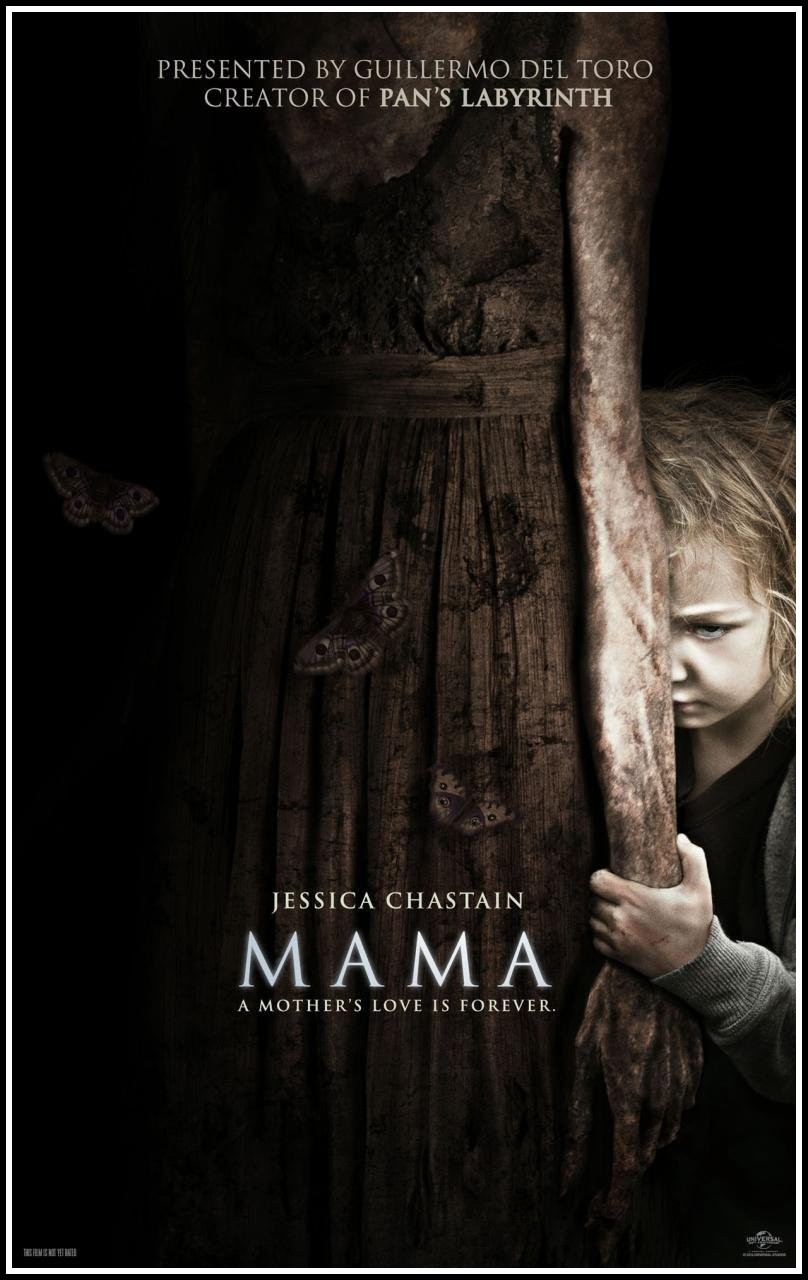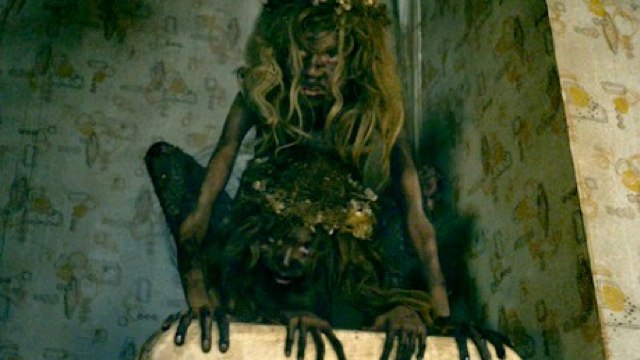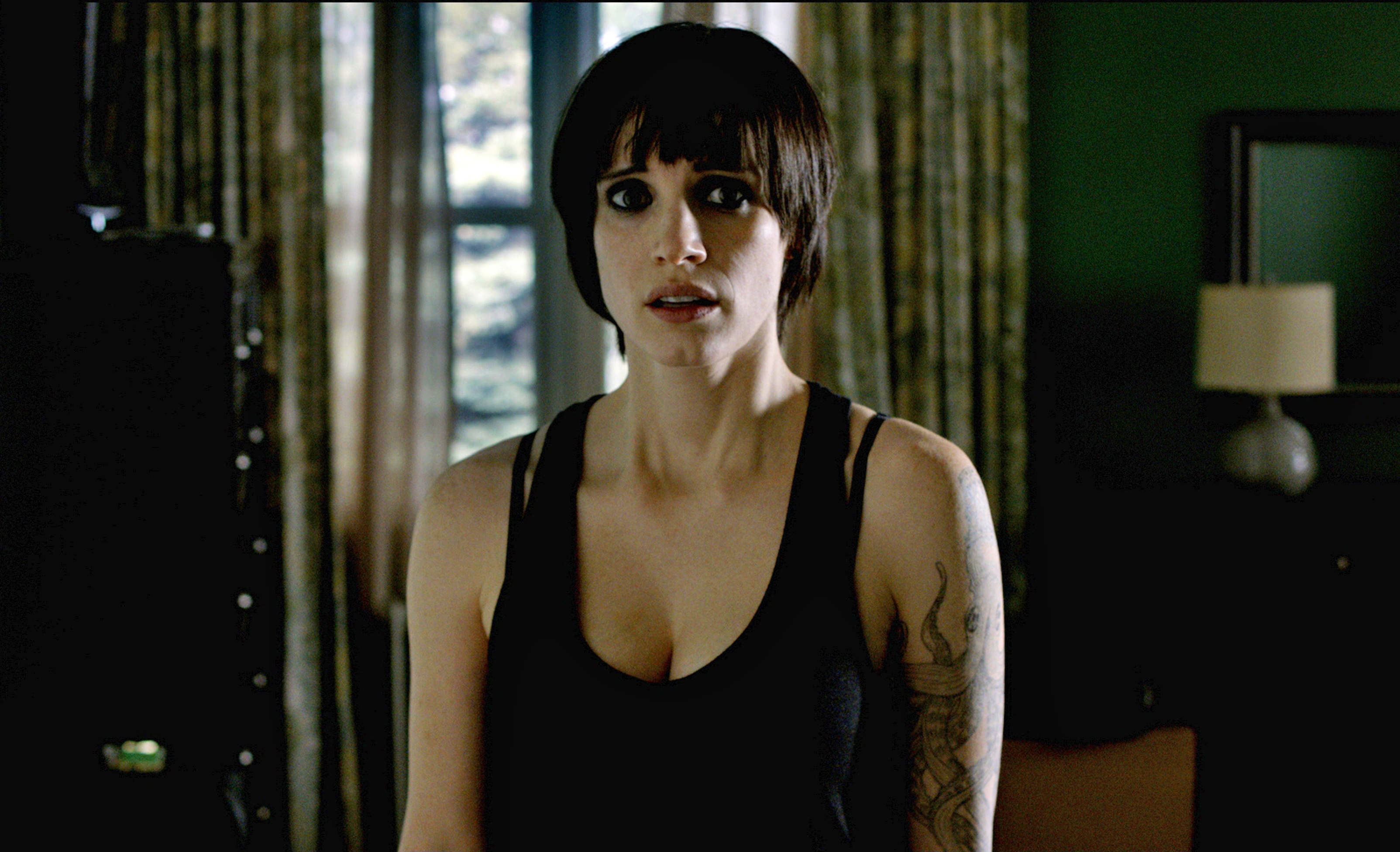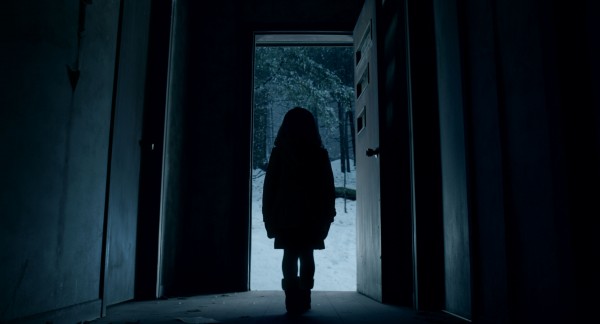I’m not sure what I was expecting from a January horror film. But it certainly wasn’t what I got. Everybody say it with me: “MA-MA.”
Genre: Horror
Premise: (from IMDB) Annabel and Lucas are faced with the challenge of raising his young nieces that were left alone in the forest for 5 years…. but how alone were they?
About: “Mama” seems to be the result of a growing trend of directors showing their chops via short films, then expanding those short films into full features or feature assignments. Mama started out as a 2008 short and has now been brought to the big screen, at least in part by Guillermo del Toro (it’s unclear how involved he was with the production). Co-writer Neil Cross is the creator of the show “Luther,” with everyone’s famous Prometheus captain in the lead role, Idris Elba. Andres Muschietti is the co-writer with his wife, and also the director of the film, which stars Jessica Chastain, the Academy Award nominee from Zero Dark Thirty.
Writers: Neil Cross and Andres Muschietti & Barbara Muschietti
Warning.
This movie is scary.
This movie is really scary.
But this movie will also make you cry.
It will hit you on an emotional level that you were not prepared for.
You will be in the theater doing your best to suck back tears before those dreaded lights come on in the end and everybody can see how much of a wuss you are.
In other words, it’s the ideal screenplay that I always ask for in the horror genre but never get. I get cheap scares. I get cheap thrills. I get cheap characters. I never get horror that makes me feel something. And I sure didn’t expect it from this film. I remember seeing the preview in the theater a month ago and laughing. You had kids crawling around like spiders while the word “Mama” was echoed theatrically in a child’s voice. I didn’t see any way this could be anything other than awful.
Boy was I wrong. Mama is the best movie I’ve seen in half a year. It would’ve been in my Top 5 of 2012 easily. Instead, it was released in the studio dumping ground of late January and February. But this is far from a piece of studio trash.
Mama starts with a harrowing opening scene featuring a deranged suburban father breaking down after the 2008 financial meltdown. He kills his wife, a couple of his co-workers, then grabs his two young daughters and starts driving. Where? He doesn’t know. He just needs to get away from here. His disorientation eventually results in his car shooting off a ledge in the mountains. The family survives the fall and starts marching through the woods, looking for shelter.
They find it in a small dilapidated cabin. But soon after going inside, they realize that somebody else lives here. And when Daddy decides to take the rest of the family with him to that big suburban block party in the sky, that house host (who we only see parts of) rips his head off and starts raising the girls herself.
Five years later, the father’s brother, who thankfully still has his head on straight, is desperately looking for the family. Miraculously, after looking everywhere in those mountains, he finds them. Except the girls are anything but the ones who left on that fateful day. They’re alone, malnourished, dirty, and, well, “feral” would be the only way to describe it. They scamper about on all fours and haven’t seen a bottle of Head & Shoulders in quite some time, as you can confirm below.
Over the next three months, a psychiatrist and his team carefully work the kids back into society and eventually the daughters are able to move in with their Uncle and his girlfriend, the too-cool-for-school Annabel. Annabel has her own shit going on. She’s a guitarist in a rock band. She’s used to living life on her terms. She was just dating this guy cause he was fun. Now she finds herself in the unenviable position of playing mother, a role she’s clearly not ready for.
After the girls move in, strange things start happening. The couple begins to hear noises, and the girls can be heard playing and laughing with somebody. One night, the disturbance becomes so intense, the Uncle gets up to see what he can find. He sees something that can’t be explained, stumbles backwards, over the railing, and slams headfirst into the stairs below, the force so great it sends him into a coma.
You know what that means . Annabel is now stuck on her own with the kids. And I don’t care if you’re mother of the year. No one wants to get stuck with kids who scamper around on all fours and tell you things like, “Don’t hug me. She’ll get jealous.” At least no one I know. While Annabel’s simply trying to make it through each day, the children’s psychiatrist has been studying the children’s tapes, and becomes interested in the girls’ repeated references to a woman who raised them in the cabin. At first he assumes that woman is part of their imagination. But the more he looks into it, the more it looks like this woman may in fact be real. And that she’ll stop at nothing to get her kids back.
Ma-ma.
The structure behind this screenplay was exceptional . I can’t remember reading a horror script that had this much forward momentum – that never got boring – that never got weak. There were a lot of things that contributed to that. Let’s see if we can identify some of them.
As you all know, I like screenplays with strong character goals. And that doesn’t change when it comes to the horror genre. I love Naomi Watts desperately trying to solve the “7-Days” tape in The Ring. I love the family trying to get their daughter back in Poltergeist. I love the mother trying to exorcise the demon inside her daughter in The Exorcist. But with the horror genre, you occasionally get the type of movie where a force is haunting our characters and we just sort of sit back and watch it happen. You see this, for the most part, in movies like, “The Others” and “Rosemary’s Baby,” and more recently in the Paranormal Activity franchise.
These are much harder stories to pull off because nobody’s going after anything. By including a character goal, your story gets pulled along the track by someone seeking to solve a problem. When you don’t have anyone pulling, your’e obviously stuck in one place. And how interesting is that?
So what Mama does is really cool. It does both. Within the house, Annabel is taking care of these girls while all this crazy shit is happening. That’s the “haunting” section. Then the psychiatrist has a goal. He suspects that the “mother” these girls are referring to wasn’t made up, as he originally suspected, but that she might be real. So he starts investigating that possibility. This works really well since we’re able to cut back and forth between the haunting and the investigation, allowing a sort of “cheat” where we get the best of both worlds.
Another real strength of Mama is its main character, Annabel, and the situation it places here in. We establish early on that she’s a terrible parent and is only in this thing for the Uncle. So when the twist comes with the uncle falling into the coma, the story switches gears to place the worst character for the job in a position where she has to do the job. What a great story choice! I mean how much more compelling is that than having the loving doting perfect Uncle around all the time? If that were the case, there would be no conflict, because Annabel would never be forced to deal with the children. This was one of several really slick story choices I give the writers credit for. Get the fucking uncle out of the picture.
Then there was the brilliant integration of the subplots. You had the psychiatrist. You had the Uncle in the hospital. You had the grandmother, who wanted custody of the kids. Then, of course, you have the girls’ own interactions with Mama herself.
And the reason I’m going gaga over all of this is because I read the bad versions of these screenplays every day. Where there are no subplots. It’s just people in a house with something weird attacking them. And that gets boring after 30 pages. Here we have so many subplots to keep weaving in and out of the main plot, that the story always remains fresh.
I also loved the decision to use two children. 99 out of 100 writers would’ve made the more predictable choice of going with one child, because one spooky child is what we always see. Of course, one spooky child is also cliché and therefore boring. By adding a second child, it opened up all these new avenues, and boy did the writers take advantage of it. One of the most brilliant choices in was to have one of the children pull away from Mama (and gravitate towards Annabel) and the other prefer Mama.
(spoiler) This created the all important CONFLICT that you want in every character dynamic (even if the dynamic is two young children) and led to a shocking, emotionally satisfying climax, one that you never could’ve achieved with a single child. And it’s why I keep going on about this same old advice – AVOID THE OBVIOUS CHOICE. Not only is it boring, but when you push yourself to go with the non-obvious, it almost always opens up new story directions that you never could’ve predicted. Why? Because nobody else has gone down that path before! so they’ve never found those choices.
There were only a few minor things that bothered me. I didn’t understand how this thing could travel from house to house through the walls. That was vague. The moths seemed more spooky than story-relevant (although I did like their payoff). And there was a laughably clumsy moment late in the story where Annabel is driving to the forest and nearly runs over the Uncle, who just happened to be stumbling onto the road at that moment. But other than that, this was a GREAT cinematic experience, the kind you dream of having every time you pay 18 bucks. Top-notch storytelling, top-notch movie-making. I will go to see this one again!
[ ] What the hell did I just watch?
[ ] wasn’t for me
[ ] worth the price of admission
[x] impressive (go see it now!)
[ ] genius
What I learned: I absolutely LOVED the execution of the character flaw here and it fits in perfectly with the article I wrote the other day. Annabel’s flaw is that she doesn’t want to parent. She doesn’t want that responsibility. You’ll notice that the entire story, then, is designed to challenge this flaw. Annabel is thrust into the position as the sole parent of two young girls. They’re resisting. She’s resisting. But as the script goes on, she starts to change, begins to care for them, and in the end, (spoiler) she’s willing to fight an otherworldly creature with her life in order to save them. It’s the ultimate character transformation, and it’s a big reason why this ending was so emotional.





